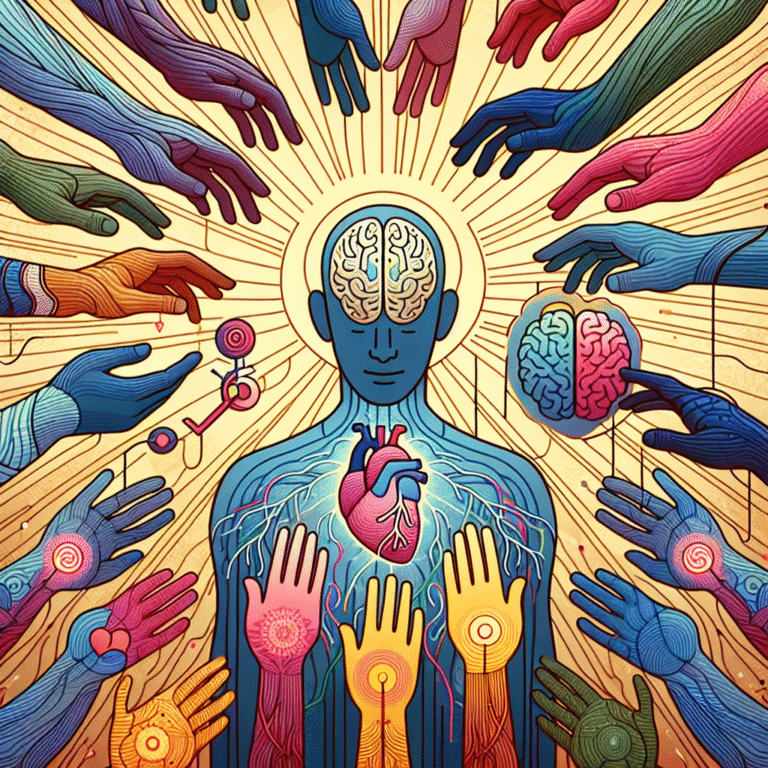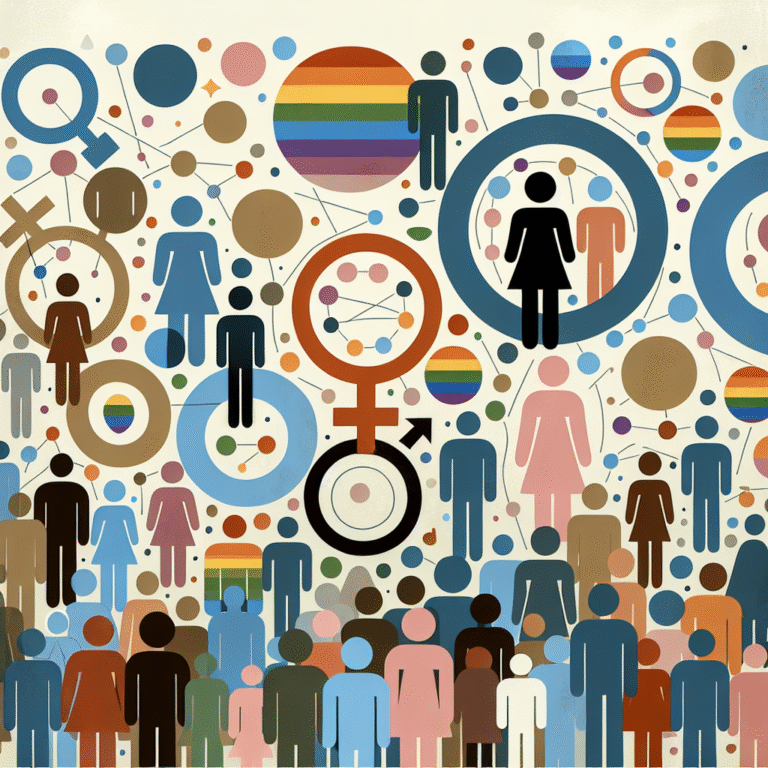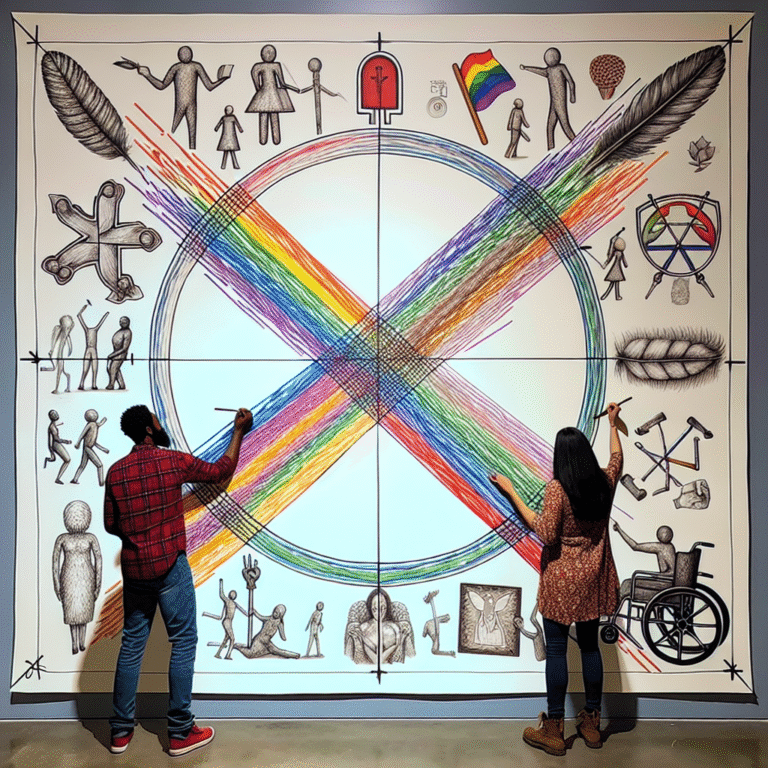
Introduction
In a world where awareness and acceptance of diverse identities are on the rise, conversations about gender have never been more relevant. The concept of gender fluidity represents a significant shift in societal perceptions of gender and identity. As psychology evolves to better understand non-binary identities, it becomes crucial to explore how these changes impact individuals, communities, and mental health. This article aims to delve into gender fluidity: how psychology is evolving to understand non-binary identities, revealing insights that illuminate the path forward for inclusivity and understanding in psychological practices.
Understanding Gender Fluidity
What is Gender Fluidity?
At its core, gender fluidity refers to a dynamic experience of gender that may change over time or depending on the context. For individuals who identify as gender fluid, their gender identity can shift between male, female, both, neither, or any other identity on the gender spectrum. This fluidity contrasts with the traditional binary understanding of gender as strictly male or female.
Historical Context
Understanding gender fluidity: how psychology is evolving to understand non-binary identities requires recognizing that non-binary identities are not a modern phenomenon. Various cultures throughout history have acknowledged non-binary identities, such as the hijras of South Asia, Two-Spirit individuals in Indigenous cultures, and fa’afafine in Samoa. These historical perspectives offer a rich context that modern psychology begins to address more comprehensively.
Case Study: The Hijra Community
The hijra, a recognized third-gender community in South Asia, embodies the complexities of gender identity. Despite facing significant societal stigma, the hijra community has persisted for centuries. Understanding their historical and cultural significance can inform contemporary psychological approaches, emphasizing the importance of cultural competence in mental health practices.
The Psychological Landscape
Evolving Definitions of Gender Identity
As society’s understanding of gender evolves, so do the psychological frameworks that support this understanding. Traditional binary models of gender have given way to more fluid definitions that acknowledge the spectrum of gender identities. Psychology is beginning to incorporate these evolving definitions into its frameworks, creating a more inclusive space for individuals who identify as non-binary or gender fluid.
Impact on Mental Health
A growing body of research indicates that acknowledging and affirming one’s gender identity significantly influences mental health outcomes. The decrease in societal stigmas and the increase in acceptance lead to positive mental health outcomes for non-binary individuals. Psychological practices are adapting to these findings, emphasizing the importance of validation and support in therapeutic settings.
Case Study: Landmark Research on Non-Binary Mental Health
A landmark study published in the Journal of Counseling Psychology examined the mental health outcomes of non-binary individuals compared to their binary-identifying peers. The researchers found that non-binary participants reported higher levels of anxiety and depression, largely attributable to societal rejection and lack of understanding. Such findings underscore the urgent need for psychological practices that recognize and validate non-binary identities.
Therapeutic Practices
Affirmative Therapy
Affirmative therapy is increasingly recognized as an essential approach for working with gender-fluid or non-binary clients. This therapeutic modality prioritizes validating and supporting clients’ gender identities, empowering them to explore their experiences without fear of judgment. By incorporating gender fluidity: how psychology is evolving to understand non-binary identities, therapists can create safe spaces for clients to express themselves authentically.
Case Study: Successful Implementation of Affirmative Therapy
A community mental health center adopted affirmative therapy techniques, specifically tailored for LGBTQ+ clients. The center reported improved mental health outcomes among its gender-fluid clients, highlighting that validation plays a crucial role in therapy. The success of this initiative demonstrates the critical need for specialized frameworks that align with evolving gender paradigms.
Educating Mental Health Professionals
As psychology grapples with these changes, educating mental health professionals becomes paramount. Training programs are increasingly incorporating components on gender fluidity and non-binary identities, fostering a generation of therapists equipped to address the unique needs of non-binary clients. This shift represents a crucial advancement in understanding gender fluidity: how psychology is evolving to understand non-binary identities.
Societal Implications
The Role of Media and Representation
The media plays a vital role in shaping public perceptions of gender identities. Increased representation of gender-fluid and non-binary individuals in film, television, and social media helps normalize these identities, fostering greater societal acceptance. Positive representation can influence individuals’ understanding of their own identities and promote inclusivity.
Case Study: Media Influence on Gender Awareness
A study conducted by the American Psychological Association analyzed the impact of inclusive media portrayals on young people’s attitudes toward gender diversity. The findings indicated that exposure to positive representations of non-binary identities correlated with greater acceptance and understanding among viewers. This illustrates how media serves as a powerful tool in shaping perceptions and attitudes around gender fluidity: how psychology is evolving to understand non-binary identities.
Legislative Changes
As societal awareness grows, legislative efforts have also begun to reflect a more nuanced understanding of gender. Laws that protect the rights of non-binary individuals—such as allowing the option of a third gender on official documents—are gaining traction. These changes signal progress in recognizing and affirming non-binary identities.
Challenges and Barriers
Societal Stigma
Despite advancements, many non-binary individuals continue to face systemic stigma and discrimination. Misunderstanding surrounding gender fluidity often leads to marginalization, which can exacerbate mental health issues. Addressing these societal barriers is crucial for fostering inclusive environments where non-binary identities can thrive.
Case Study: A Survey on Transphobia and Mental Health
A comprehensive survey conducted by an LGBTQ+ advocacy organization found that non-binary individuals reported facing significant levels of transphobia. The study highlighted the pervasive impact of societal rejection on mental health, reinforcing the need for psychological systems to address these challenges actively.
Tools for Support
Community Resources
Community support plays a vital role in the well-being of non-binary individuals. Various organizations offer resources, support groups, and advocacy services specifically designed to address the unique experiences of non-binary and gender-fluid individuals. These resources are essential in fostering a sense of belonging and community.
Online Platforms
In the digital age, online platforms have emerged as valuable resources for individuals exploring their gender identity. Forums, social media groups, and educational websites provide information, social connection, and validation for those identifying as non-binary. These platforms can supplement traditional psychological support by creating peer-led initiatives.
Conclusion
The journey toward understanding gender fluidity: how psychology is evolving to understand non-binary identities reflects the broader societal shift towards inclusion and acceptance. As psychology continues to adapt and innovate in its approaches, individuals who identify as non-binary will benefit from more comprehensive support structures and services.
The evolving landscape of gender identity poses both challenges and opportunities. As we move forward, fostering greater awareness, understanding, and inclusivity will be essential. By embracing and affirming diverse identities within psychological frameworks, we can inspire individuals to express their true selves—free from the constraints of outdated binary models.
FAQs
-
What does it mean to be gender fluid?
- Gender fluidity refers to a flexible experience of gender that may shift over time. Individuals may identify as male, female, both, neither, or any other identity depending on various factors.
-
How can psychology support non-binary individuals?
- Affirmative therapy, community resources, and specialized training for mental health professionals can significantly support non-binary individuals by validating their identities and addressing unique mental health needs.
-
What are some common misconceptions about non-binary identities?
- Common misconceptions include the notion that being non-binary is just a phase, that it doesn’t exist, or that non-binary individuals are simply trying to seek attention.
-
Why is representation in media important for non-binary identities?
- Media representation helps normalize non-binary identities, fostering societal acceptance and providing validation for individuals exploring their own gender identities.
- What can individuals do to support non-binary friends and family?
- Listening, validating their experiences, using correct pronouns, and fostering open conversations about gender identity can greatly support non-binary individuals in your life.
By embracing the complexity of gender, we can all contribute to a world where diversity is celebrated, and every individual feels valued and understood.














